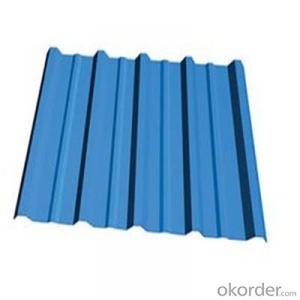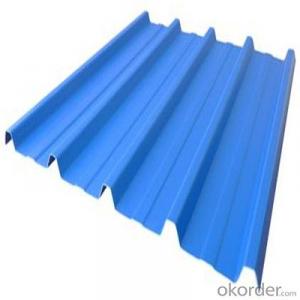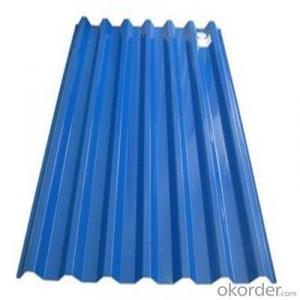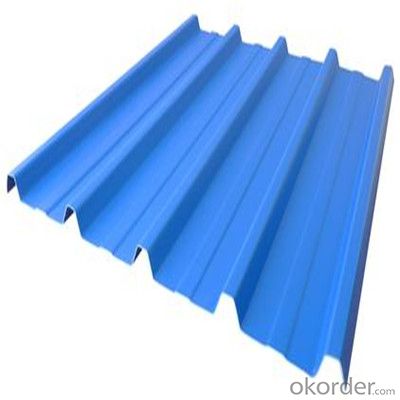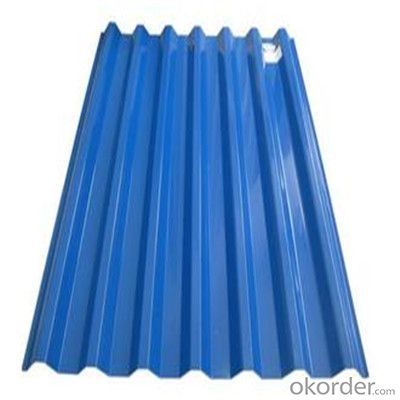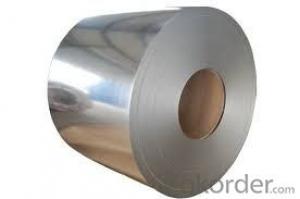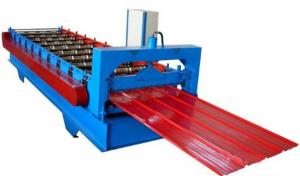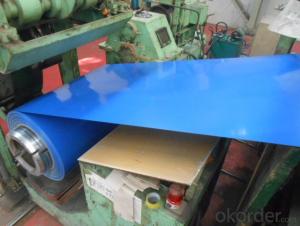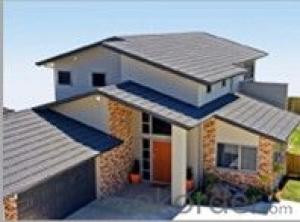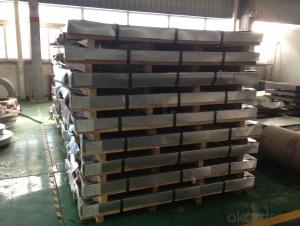Prepaint Galvanized Corrugated Iron Sheet
- Loading Port:
- Shanghai
- Payment Terms:
- TT OR LC
- Min Order Qty:
- 50 m.t.
- Supply Capability:
- 1000000 m.t./month
OKorder Service Pledge
OKorder Financial Service
You Might Also Like
Specification
Description of Prepainted Corrugated Iron Sheet:
1. Hot-dipped galvanized
2. Color: All RAL color
3. Thickness: 0.23-1.0MM
4. Developed Width: 600mm to1200mm
Specifications of Prepainted Corrugated Iron Sheet:
1. Heat insulation
2. Water proof
3. Easy install
4. Super quality
Features of Prepainted Corrugated Iron Sheet:
(1) Novel and beautiful modeling , rich luster, strong adornment sex, flexible in combination, can express different architectural styles;
(2) Light weight (6 ~ 10 kg/m squared) high strength (yield strength 250 ~ 550 mpa) fine skin stiffness,fine seismic performance of waterproofing agent;
(3) Factory product with high quality industrial buildings, public buildings, storehouse halls, residential buildings, trade buildings, sport halls, exhibition buildings and offices
Images of Prepainted Corrugated Iron Sheet:
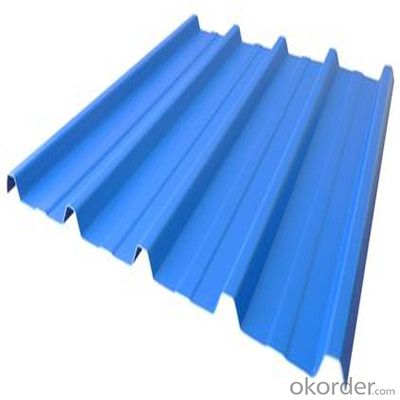
FAQ:
1. What's the Delivery port?
The main ports are Qingdao and Tianjin, we also can deliver to other ports to meet your requirements
2. How long is the lead time?
Delivery time: 45 days after order confirmed.
3. What payment term do you accept?
Payment: T/T or L/C at sight.
- Q: Can steel sheets be used for interior design purposes?
- Yes, steel sheets can be used for interior design purposes. They are commonly used for creating modern and industrial aesthetics in interior spaces. Steel sheets can be used for various applications such as wall paneling, room dividers, countertops, backsplashes, and decorative accents. Their durability, sleek appearance, and ability to be customized make them a popular choice for contemporary interior designs.
- Q: Are the steel sheets recyclable?
- Yes, steel sheets are recyclable. Steel is one of the most commonly recycled materials worldwide due to its high recycling rate and ease of processing. When steel sheets reach the end of their useful life, they can be collected, sorted, and sent to recycling facilities where they are melted down and transformed into new steel products. Recycling steel sheets not only helps conserve natural resources and reduce energy consumption but also helps reduce waste and minimize environmental impact.
- Q: What is the average weight of steel sheets per square foot?
- Depending on the thickness and type of steel, the average weight per square foot of steel sheets can vary. However, as a general rule, mild steel sheets typically weigh between 40 to 100 pounds per square foot. For thicker and heavier steel sheets used in construction or industrial purposes, the weight can be as high as 200 pounds or even more per square foot. It is worth mentioning that these weights are approximate and subject to variation based on the steel sheet's specific specifications.
- Q: How do steel sheets perform in terms of chemical resistance?
- Steel sheets generally have good chemical resistance due to their high corrosion resistance. However, their exact performance can vary depending on the specific type of steel and the chemicals they come into contact with.
- Q: Can the steel sheets be used for elevator doors?
- Indeed, elevator doors can utilize steel sheets. Given steel's robustness, longevity, and fire-resistant attributes, it serves as a prevalent choice for constructing elevator doors. By manipulating and tailoring steel sheets, they can be customized to precisely match the dimensions and specifications of the elevator doors, ensuring a dependable and secure enclosure. Moreover, steel sheets can be treated with diverse coatings and finishes to augment their aesthetic appeal while safeguarding them against corrosion.
- Q: Can steel sheets be used for storage cabinets or lockers?
- Yes, steel sheets can be used for storage cabinets or lockers. Steel is a durable and strong material that is commonly used in the construction of cabinets and lockers due to its resistance to corrosion, fire, and impact. Additionally, steel provides security and longevity, making it an ideal choice for storage solutions.
- Q: Are steel sheets suitable for magnetic shielding applications?
- Indeed, magnetic shielding applications find steel sheets to be fitting. Being a magnetic material, steel possesses the capability to redirect magnetic fields effectively, thereby diminishing their intensity or averting their access to specific regions. Employing steel sheets as a barricade ensures the protection of delicate electronic equipment and devices against external magnetic interference. The thickness and composition of the steel sheet can be modified accordingly to attain the desired degree of magnetic shielding. Furthermore, steel sheets are frequently deemed economical and easily accessible, rendering them a pragmatic selection for magnetic shielding applications.
- Q: Can steel sheets be used in telecommunications applications?
- Yes, steel sheets can be used in telecommunications applications. Steel sheets are commonly used for the fabrication of telecom cabinets, enclosures, and equipment racks. They provide durability, strength, and electromagnetic shielding properties, making them suitable for protecting telecommunications equipment and infrastructure.
- Q: Can steel sheets be customized according to specific requirements?
- Yes, steel sheets can be customized to meet specific requirements.
- Q: Are steel sheets suitable for manufacturing kitchen appliances?
- Kitchen appliances can be manufactured using steel sheets, which are well-suited for this purpose. Steel is a durable material with many uses in the manufacturing industry. It possesses high strength, making it capable of withstanding the everyday wear and tear experienced by kitchen appliances. Moreover, steel sheets are resistant to corrosion, a vital quality in a kitchen environment where appliances are frequently exposed to water, moisture, and food spills. In addition, steel is a hygienic material that is easy to clean and maintain, making it an ideal choice for kitchen appliances where cleanliness is of utmost importance. Furthermore, steel sheets can be easily shaped and formed into various designs and sizes, allowing for a wide range of kitchen appliances to be produced. Overall, steel sheets possess the necessary properties and characteristics needed for the production of kitchen appliances.
Send your message to us
Prepaint Galvanized Corrugated Iron Sheet
- Loading Port:
- Shanghai
- Payment Terms:
- TT OR LC
- Min Order Qty:
- 50 m.t.
- Supply Capability:
- 1000000 m.t./month
OKorder Service Pledge
OKorder Financial Service
Similar products
Hot products
Hot Searches
Related keywords
